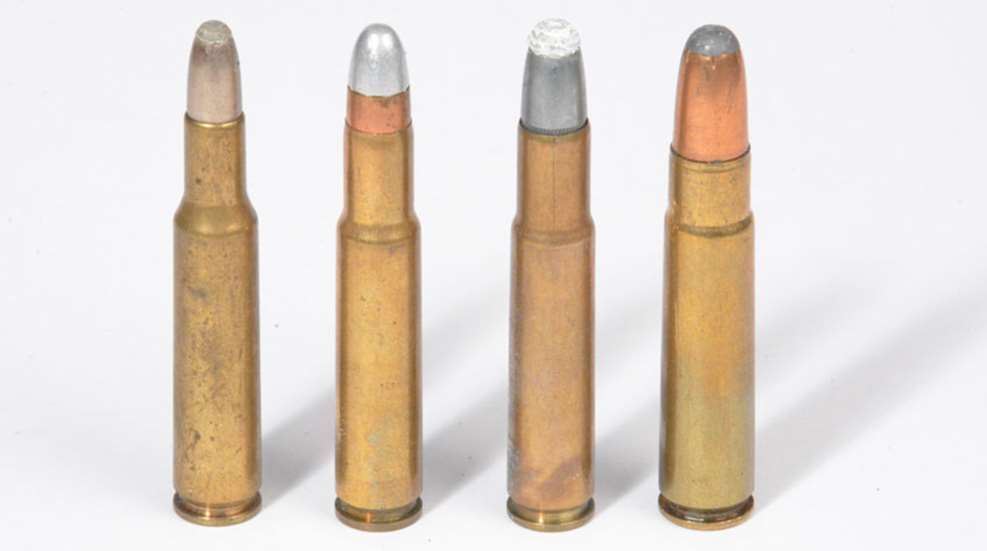
Who doesn’t love a good story about something “lost?” The proverbial lost gold mine, lost kingdom or a lost ship, for instance? It’s all great stuff—the foundation of legends, really. Well, this is the true story about the lost cartridges of Remington.
We think of Winchester and Remington as rivals and different companies, but it wasn’t always so. Remington was undergoing some hard times, and in 1886 they were placed in receivership. In 1888, Hartley & Graham partnered with Winchester Repeating Arms to buy E. Remington and Sons. They renamed it Remington Repeating Arms Company.
Now Winchester, Remington’s main rival, owned half of Remington Arms Company, which explains why Remington never entered the lucrative lever-action rifle or pump-action shotgun markets. That association ended in 1896, freeing Remington to start development of many new firearm designs.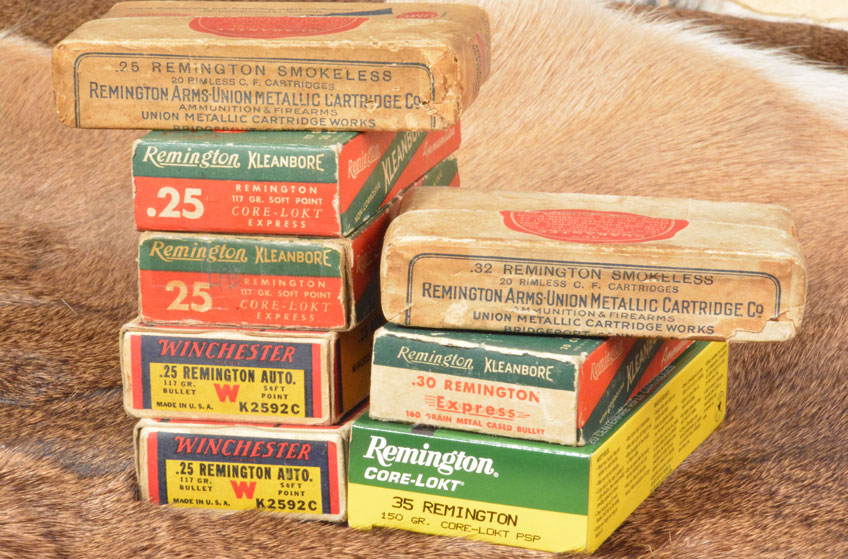
Ammo boxes containing some of the lost Remington cartridges
By then, Winchester had introduced the Model 1894 lever-action rifle, and the first sporting cartridges using smokeless powder, the .25-35 Win. and the .30 WCF, which we know as the .30-30 Win. today. A few years later, they introduced their .32 Win. Spl., which legend holds was designed to work with black or smokeless powder to appease those handloaders unwilling to upgrade to that newfangled “smokeless” propellant. Winchester was enjoying great success with these cartridges just as Remington was scrambling to find a way into the emerging market.
Remington Autoloading Rifle
In 1906 Remington introduced the J.M. Browning-designed Remington Autoloading Rifle. This was the first successful semi-automatic rifle offered to hunters. It was chambered in four new cartridges; .25 Rem., .30 Rem., .32 Rem. and .35 Rem. The first three were to compete with the .25-35 Win., .30-30 Win. and .32 Win. Spl. and closely matched their performance. Those three used a common parent case, while the .35 Rem. was a different cartridge using a larger case. In an era dominated by rimmed cartridges, the bottlenecked and rimless Remington cartridges were ahead of their time, utilizing the same design adopted by most modern rifle cartridges today.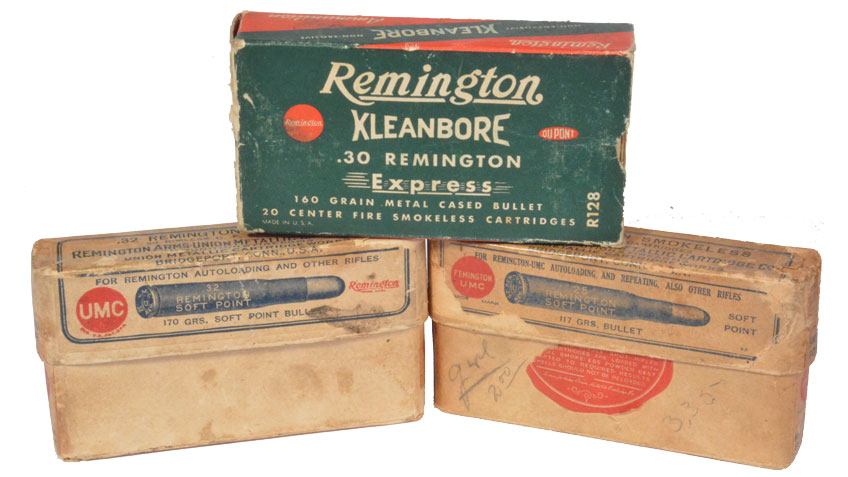
.25 Rem., .30 Rem. and .32 Rem. are obsolete, and lost to most hunters.
In 1911, the name of the Autoloading Rifle was changed to the Model 8. This gun laid the foundation for the long history of Remington semi-automatic hunting rifles. Later, the Model 81, 740, 742, 7400, 4, 74 and 750 semi-automatic rifles followed. They enjoyed huge popularity with hunters. Sadly, Remington dropped the Model 750 from their line in 2016, ending a 110-year reign of semi-automatic hunting rifles. Some will argue that the AR-style R-25 continues the tradition, but in my opinion, it does not. It’s a much different firearm.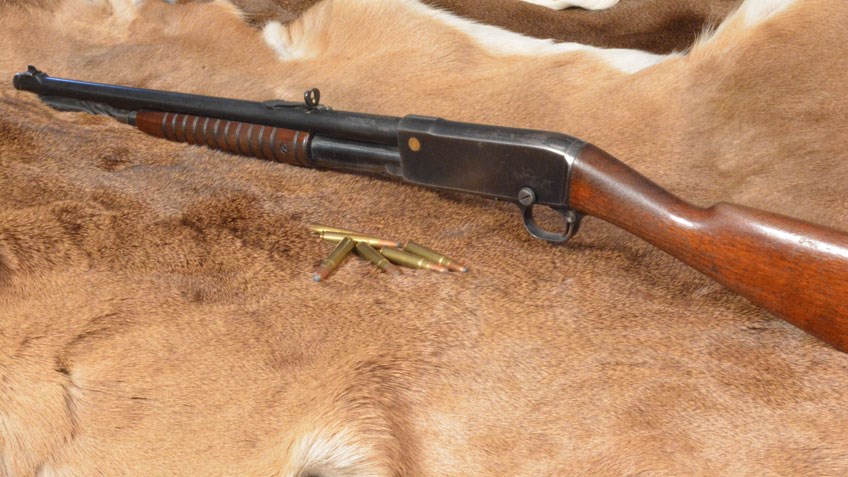 Remington Model 14 carbine pump action in .35 Rem.
Remington Model 14 carbine pump action in .35 Rem.
In 1896 Remington hired John D. Pedersen to design pump-action shotguns. As might be expected, that bled over into rifles. The Pedersen-designed pump action Model 14 rifle was introduced in 1912, chambered for those same four Remington cartridges. The Model 14 was later updated to the Model 141, which was replaced by the Model 760 in 1952, allowing the use of more powerful cartridges like the .30-06 Springfield. In 1981, the 760 was replaced by the Model 7600 and the Model 6. The Model 6 was dropped in 1987, but the Remington Model 7600 pump-action rifle dominates that market and is hugely popular with eastern deer hunters.
I suppose my interest in these lost cartridges goes back to the mid-60s, when my best friend at the time, Norman Shum, shot his first deer. His rifle? “A .30 Remington Pump.” In a world where Winchester lever-actions were as common as rocks, this was an exotic rifle.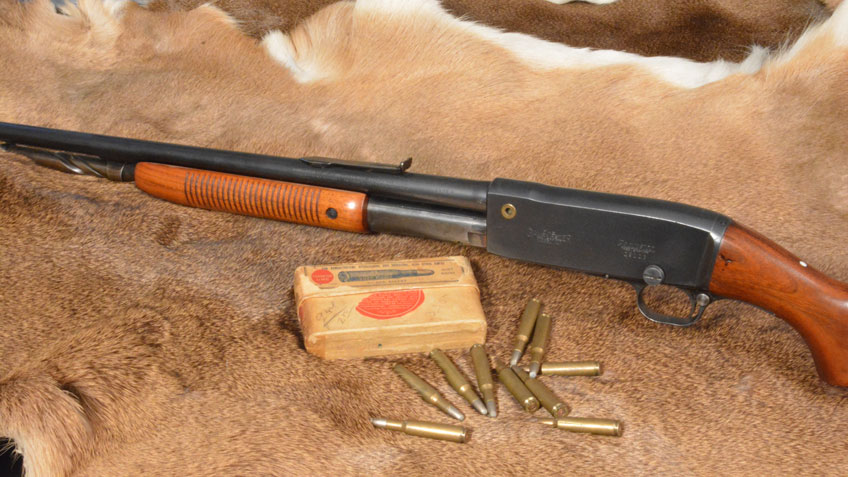
Remington Model 141 pump action rifle in .25 Rem.—a custom order from Remington in the 1930s. I have used this particular one to down a deer.
Many years later, I bought a Model 141 in .25 Rem., a gun that by most accounts never officially existed. When Remington changed from the Model 14 to the Model 141 in 1935, they dropped the .25 Rem. cartridge. I researched the rifle and found it was a custom order from Remington. I took it hunting that year and shot a whitetail, proving these old cartridges still have their mojo.
After that, I started informally collecting the old Remington pumps. I now have at least one in each of the old Remington cartridges and have hunted with them all, as well as spent a lot of time shooting them at the range.
Of the Winchester cartridges, only the .30-30 Win. remains in production. On the other side of the aisle, the .35 Rem. is still with us as well. Yes, there was a .35 Win., introduced in 1903, although it’s commonly thought that the .35 Rem. was designed to compete with the very popular .38-55 Win. cartridge Winchester chambered in the Model 1894.
So any way you look at it, when it comes to surviving the cartridge wars, it would seem to be a tie with casualties on both sides.
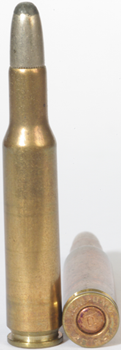
The Lost Remington Cartridges
.25 Remington
The .25-35 Win. was enjoying some success (although it’s a puzzle why; the .30-30 Win. was a much better cartridge). If you had to pick one or the other, it was a no brainer. No matter, Remington felt the need to counterpunch. They introduced their rimless version with a 117-grain bullet at 2125 fps. A later “Express” load bumped the velocity up to 2350 fps.
.30 Remington
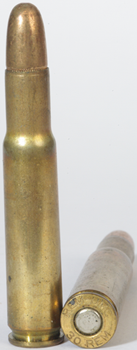
As expected, the .30-caliber was very popular. It was, after all, competing with the .30-30 Win., one of the most successful rifle cartridges in history. It’s still very common to find used rifles in this chambering, both in pump-actions and semi-automatics. I was recently at a gun shop that had a pristine Model 8 in .30 Rem. A freelance writer’s life is a series of financial highs and lows—sadly that day was ebbing very low, and I walked out of the gun shop dejected and cursing my chosen profession. No matter, I have a Model 141 pump action rifle in .30 Rem. I have owned it for years, and it has some time in theater during my whitetail crusades. The .30 Rem. pushes a 170-grain bullet to a muzzle velocity of 2120 fps, and a 150-grain to 2365 fps.
.32 Remington
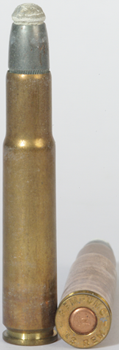
The .32 Rem. provided a bit more bullet diameter than the .30 Rem. and, as with the .32 Spl., many hunters believed that meant more killing power. My Model 14 rifle in .32 Rem. is a little rough looking, but it’s special for a different reason. A friend introduced me to the woman who owned it. She explained that while she knew it was beat up, it was her dad’s gun and she would only sell it to somebody who appreciated rifles and family. I promised to never sell it, to pass it on to my son and to make sure I shot it every now and then. She wrote me later to say she used the money I paid her for it to buy a necklace and had her dad’s name engraved on the back. She wears it every day to remember how special he was to her. The cartridge uses a 170-grain bullet at 2220 fps.
.35 Remington
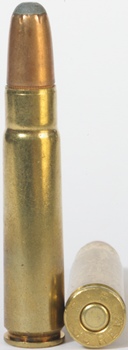
Actually, this one survives. Or did. As far as I know, Marlin was the last major company to chamber rifles with it, and the .35 Rem. was very popular with deer hunters right up to the point when Remington bought out Marlin in 2007. It took years, but Marlin is back on track and turning out some great lever-action rifles. Sadly, the .35 Rem. is not included—we can only hope they will correct that defect soon. I own a bunch of rifles and handguns in .35 Rem., including a Model 141 that my son bought for my birthday some years ago. I try to give that rifle some quality deer-stand time every year.
Ammunition is still made for the .35 Remington by most major ammo companies. Typically, it uses a 200-grain bullet at 2080 fps. But, if you have a rifle, consider Hornady’s updated LEVERevolution load with a 200-grain Flex Tip bullet at 2225 fps.
So there you have it—the story of the lost Remington cartridges, and where they stand today. One can only hope that, just like a lost gold mine, they will one day be rediscovered, and not just by the hardest-core of firearm enthusiasts.


































